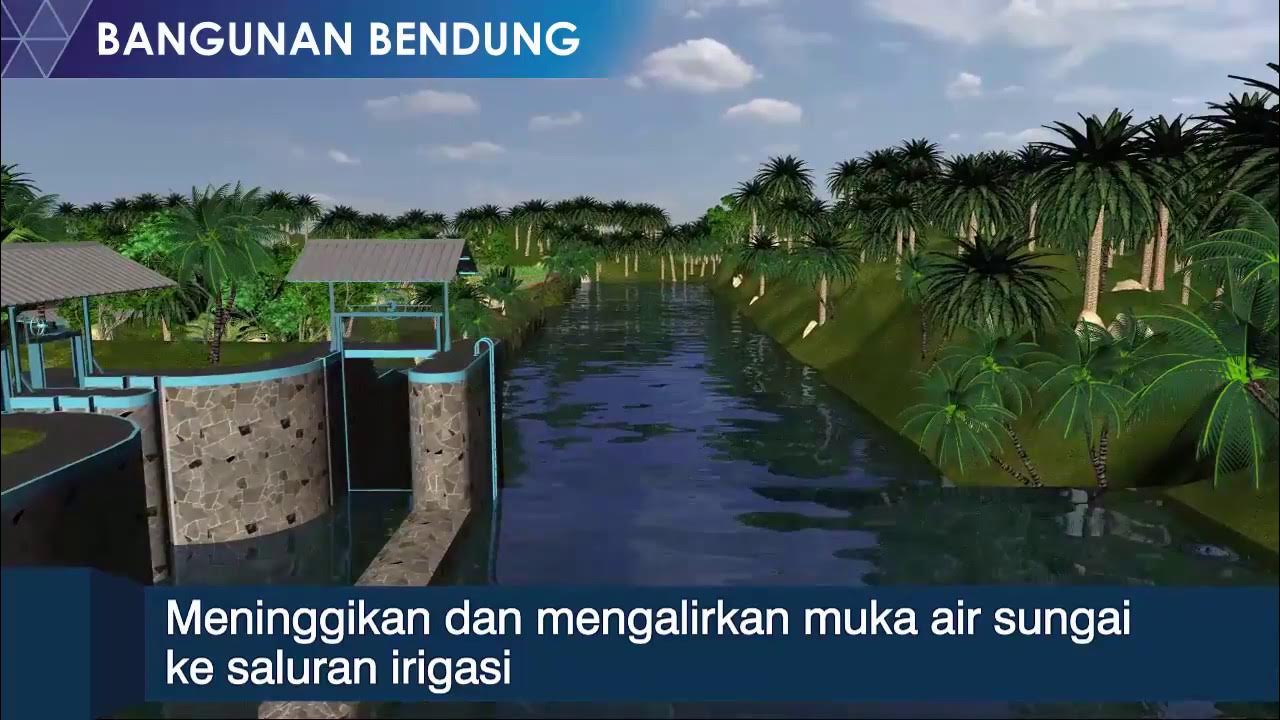Irigasi, Denyut Nadi Pertanian di Indonesia
Summary
TLDRThe video highlights the critical role of dams and irrigation infrastructure in Indonesia’s food and water security. It focuses on the Jatiluhur Dam in West Java, which supports irrigation for over 240,000 hectares of farmland. Modernizing irrigation systems, like the Tarum Timur area, boosts agricultural productivity and sustainability. Interviews with local farmers demonstrate how improved irrigation has doubled crop yields and reduced costs, particularly in water and pesticide use. The Indonesian government's commitment to strengthening food sovereignty is emphasized, aiming for a more efficient agricultural system to ensure national food security.
Takeaways
- 😀 Dams and irrigation infrastructure in Indonesia are crucial for supporting food security, energy, and water needs.
- 😀 The Indonesian government is prioritizing self-sufficiency in food, with a focus on irrigation systems and dam infrastructure.
- 😀 The Jatiluhur Dam, the largest in Indonesia, provides irrigation for 242,000 hectares of agricultural land in regions like Purwakarta, Subang, and Bekasi.
- 😀 Modernization of the Jatiluhur Dam’s irrigation system aims to improve water management efficiency, supporting more sustainable agricultural practices.
- 😀 Improved irrigation systems have led to a significant increase in agricultural productivity, with yields up by 20-30% in some areas.
- 😀 Before the improvements, farmers struggled with inconsistent water supply, but the modernized systems now ensure a steady flow of water for crops.
- 😀 Farmers report increased yields, with some seeing up to a 2-fold increase in harvests after the introduction of efficient irrigation systems.
- 😀 The modernization of irrigation systems has reduced costs for farmers, particularly in areas such as pest control, as more efficient water management reduces crop stress.
- 😀 Local farmers express gratitude for the improved irrigation systems, as it helps to ensure timely planting and harvesting, reducing financial strain.
- 😀 The Indonesian government's commitment to food sovereignty is evident through the continued investment in irrigation and dam infrastructure, which is crucial for sustainable agriculture.
Q & A
What is the main role of dams in Indonesia as discussed in the transcript?
-Dams in Indonesia play a crucial role in supporting food, energy, and water self-sufficiency by providing essential water resources for agriculture, energy production, and ensuring sustainable development.
What is the goal of Indonesia's dam infrastructure in relation to food security?
-The goal is to support the national food self-sufficiency target, which is a priority program of President Prabowo Subianto and Vice President Gibran Rakabumi. This is achieved through improved irrigation systems that directly benefit agricultural land.
How does the Jatiluhur Dam contribute to agricultural irrigation?
-The Jatiluhur Dam, located in Purwakarta, West Java, is the largest dam in Indonesia. It serves as a vital water source for irrigation, covering 242,000 hectares of agricultural land in multiple districts including Purwakarta, Subang, and Bekasi.
What modernization efforts are being made to the Jatiluhur irrigation system?
-The modernization of the Jatiluhur irrigation system, especially in the Tarum Timur irrigation area, is aimed at improving the efficiency of water management, enhancing agricultural productivity, and increasing the competitiveness of the agriculture sector in West Java.
What was the impact of the irrigation improvements on local farmers?
-Farmers experienced significant improvements in water availability, leading to increased crop yields. Before the improvements, water shortages forced farmers to use costly pumps, but after the upgrades, water supply became reliable, doubling crop yields for some farmers.
How did irrigation improvements affect the cost of farming for local farmers?
-With improved irrigation, farmers were able to reduce costs, particularly in the use of water pumps. Previously, they had to rely on expensive water pumps, but now with a steady water supply, they save money and time, making the farming process more economical.
What improvements have farmers seen in crop yields after the irrigation system was modernized?
-After the modernization, crop yields have increased, with some farmers reporting up to a 30-20% increase in their harvests, from 5 tons per hectare to 6-7 tons per hectare.
What is the farmers' perspective on the new irrigation system?
-Farmers are generally positive about the new irrigation system, noting that it has made water availability more reliable, which has resulted in better crop growth and reduced the need for additional expenditures like extra herbicide applications.
What future improvements do farmers hope to see in the irrigation system?
-Farmers hope for further improvements, such as extending and enhancing the irrigation networks to reach more areas, ensuring that the water supply remains consistent and accessible throughout the farming cycle.
What is the broader goal of the government's investment in dam and irrigation system modernization?
-The broader goal is to achieve food sovereignty in Indonesia by enhancing water management and irrigation efficiency, which directly supports the national food security program and ensures a sustainable agricultural sector.
Outlines

This section is available to paid users only. Please upgrade to access this part.
Upgrade NowMindmap

This section is available to paid users only. Please upgrade to access this part.
Upgrade NowKeywords

This section is available to paid users only. Please upgrade to access this part.
Upgrade NowHighlights

This section is available to paid users only. Please upgrade to access this part.
Upgrade NowTranscripts

This section is available to paid users only. Please upgrade to access this part.
Upgrade Now5.0 / 5 (0 votes)





